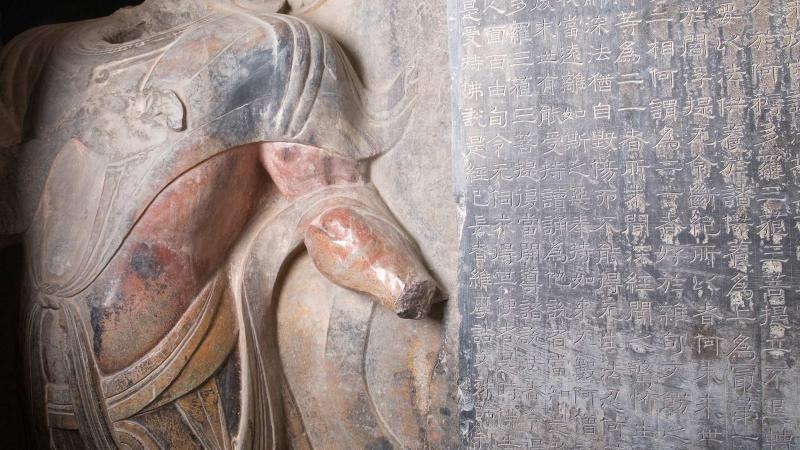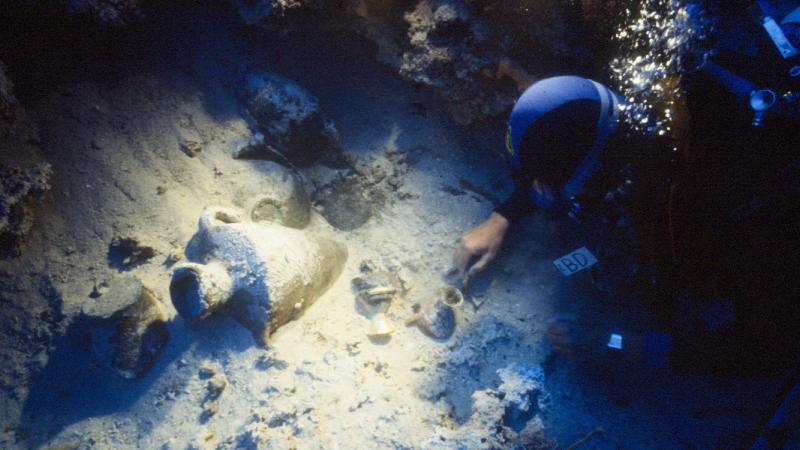Consider the challenges of displaying the Walters Art Museum’s extensive collection of illuminated manuscripts, texts whose hand-written pages are decorated with extensive miniature illustration often using gold and other precious colors. To combat the enemies of light and humidity, individual manuscripts can be exhibited only once a year and for a period of no more than three months. Because of the books’ fragile nature, page-turning is all but impossible and manuscripts must be displayed opened. And in order to preserve the integrity of the piece, no page can be displayed more than once every five years.
This clearly limits the amount of time the public can puzzle over the mythical beasts found in The Book of the Faiyum, an Egyptian text from the Greco-Roman period, or marvel at the intricate botanical renderings that grace the cover of a Qur’an from 1738 CE.
So what is a curator to do? For Martina Bagnoli, the Andrew W. Mellon Curator in Charge of Medieval Art and Manuscripts, and her staff, the solution was digitization.
In 2008, the Walters in Baltimore was awarded $307,500 from NEH to start digitizing their world-renowned collection of over 900 objects, some of which had never before been cataloged. The digitization began with The Islamic Digital Resource Project, a collection of the museum’s 128 illuminated Islamic manuscripts and leaves. A second grant of $315,000 included 105 manuscripts of German, Russian, Armenian, Byzantine, Ethiopian, Dutch, English, and Spanish origins, while a $265,000 grant covered digitization of 112 Flemish manuscripts, mainly the Books of Hours, dating between 1200 and 1600 CE.
Preparing a collection for digitization is no easy task. A conservator must first ensure that the manuscript is stable by checking each page for loose or flaking paint and making any necessary repairs. Manuscripts are then scanned, page by page, using a special vacuum wedge to hold the object in place. Each scan is viewed on a color-calibrated monitor and checked against the original. All parts of the manuscript—covers, pages, flyleaves—are rendered into high-resolution archival images, which, along with descriptive cataloging information, are made available for free download at thedigitalwalters.org. In six years, the museum has created 130,892 images—which equals 324 books—and is in the process of making a companion website with greater and more precise search capabilities.
Perhaps the most exciting part, though, is how the images are being used. Scenes from Persian manuscripts show up regularly on image-sharing sites like Pinterest and Flickr. Classes, like a recent art history course at the University of Virginia, are using the digitized archive as a basis for research projects. The curators were even contacted by a craftswoman in West Virginia who regularly downloads manuscript images to create embroidery patterns.
“A lot of new projects are starting around our books,” says Bagnoli. “The more interest we generate, the better it is. It’s a way to really bring things they might not know exist to the attention of folks out there who are interested, from the common man to the scholarly community to the tech community.”
Written by Mary Kay Zuravleff, author of the novels The Bowl Is Already Broken and The Frequency of Souls.


